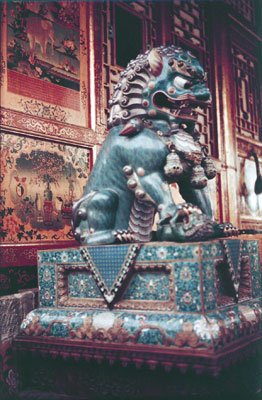
BMR.6.8.17 (Transparency colour)


BMR.6.8.17 (Transparency colour)

Hugh E. Richardson
Hugh Richardson
1936-50
Lhasa > Norbu Lingka (entrance verandah) >
BMR.6.8.17
60 x 90 mm
Transparency Colour
Hugh E. Richardson
Technical Information - The camera used to take this collection of colour slides (Dufay colour) were a Zeiss Super Ikonta and a Reflex Korelle. [KC 09/10/2006]
Manual Catalogues - Typewritten handlist entitled 'Hugh Richardson Collection, The British Museum. Photographs taken between 1936-50. Cameras: Zeiss Super Ikonta, Reflex Korelle. 300 colour slides (Dufay colour); copies made Jan. 1995.
[no.] 17. Entrance verandah to one of the Norbulingka palaces. Chinese style lion was probably installed by the Thirteenth Dalai Lama.' [KC 09/10/2006]
Other Information - Location: Hugh Richardson mentions Norbu Lingka in High Peaks, Pure Earth , London, Serindia Publications, 1998, p. 304, "West of the main city lies the summer residence of the Dalai Lama at the "Jewel Park" of Nor-bu-gling-ka (1936-50). The park covers a large area containing four palace complexes, an opera ground and some government buildings. First established by the seventh Dalai Lama in the mid-eighteenth century, the initial site was greatly augmented by the eighth and thirteenth incumbents. The present Dalai Lama added his palace as recently as 1954-6." [KC 13/10/2006]
For Citation use:
The Tibet Album.
"Chinese lion guarding one of the Norbu Lingka palaces"
05 Dec. 2006. The British Museum.
<http://tibet.prm.ox.ac.uk/photo_BMR.6.8.17.html>.
For more information about photographic usage or to order prints, please visit the The British Museum.
© The British Museum